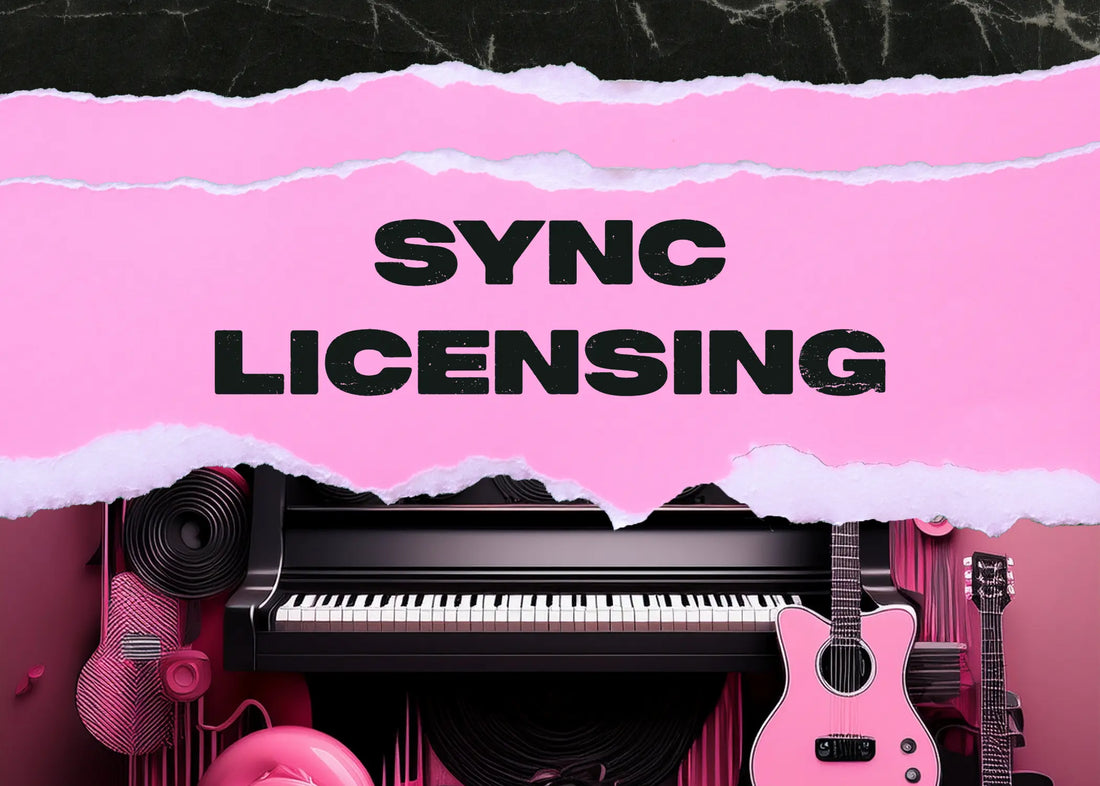
💼 The Sync Licensing Starter Guide: How to Monetize Your Music in 2025
Share
If you’re a musician, producer, or composer in 2025, chances are you’re looking for reliable, scalable ways to monetize your music beyond streaming. One of the most powerful—and often misunderstood—opportunities is sync licensing: the placement of your music in film, TV, video games, advertisements, trailers, podcasts, and more.
This guide will walk you through the modern sync licensing landscape, what you need to get started, how to get noticed, and how to turn your tracks into real income.
🎬 What Is Sync Licensing?
Sync (short for “synchronization”) licensing is the process of pairing music with moving picture. Any time a song is placed in a visual medium—like a Netflix series, an Apple ad, a YouTube video, or a video game—there’s a sync license behind it.
There are two rights involved in every sync deal:
- Master Rights – the actual recording
- Publishing Rights – the composition (lyrics, melody)
If you own both, you’re considered one-stop—and that makes you a dream to license.
💡 Why Sync Licensing Matters in 2025
Streaming royalties are unpredictable. Touring is expensive. But sync licensing offers consistent, scalable opportunities—especially in today’s content-driven economy:
- More shows, games, podcasts, and brand videos are being produced than ever before.
- Even small placements can pay hundreds or thousands upfront, with backend royalties that last for years.
- Brands and media companies are actively seeking independent, one-stop music because it’s cheaper and easier to clear than major-label tracks.
🎯 The sync market is no longer reserved for major artists—it’s a massive opportunity for indie creators who know how to package and pitch.
🧰 What You Need to Get Started
You don’t need a label deal or expensive manager. You just need a few essentials:
✅ High-Quality, Sync-Friendly Music
- Emotional clarity: each track should convey a distinct mood
- Strong structure: clear intro, build, and ending
- Clean mix/master: polished but not overproduced
- No uncleared samples or complex co-writer splits
✅ Instrumentals + Alt Mixes
- Always deliver instrumental versions
- Include 30s, 60s, and 15s edits if possible
- Consider “no drums” and “no lead” versions
- Prepare stems for editors who may want to remix or adapt your work
✅ Metadata + Contact Info
- File naming:
ArtistName_TrackTitle_Mood.mp3 - Tags: mood, genre, instruments, BPM, key
- Embed your email/contact info in metadata
- Register with a PRO (e.g., ASCAP, BMI, SESAC) so you can collect backend royalties
✅ Legal Ownership
- Know your splits: 100% master and publishing? Or do you co-own with others?
- Use split sheets with collaborators
- Avoid samples unless you’ve cleared the rights
📢 Supervisors and libraries won’t touch a track unless it’s clear, simple, and fully licensable.
📦 Where to Submit Your Music
Here are four main paths to monetize your music via sync:
1. Music Libraries
These are catalogs that music supervisors search when they need quick, licensable music. Libraries include:
- Artlist
- AudioNetwork
- Playbutton Media
- Musicbed
- Epidemic Sound
- Marmoset
- Pond5
Each has its own terms. Some are exclusive (you can’t pitch elsewhere), others are non-exclusive (you retain full control).
2. Sync Agencies / Reps
These are teams or individuals who pitch your music to supervisors in exchange for a percentage (typically 25–50%). They often look for:
- One-stop tracks
- Underscore and instrumental options
- Niche genres with commercial appeal (e.g., lo-fi, indie folk, cinematic EDM)
3. Direct-to-Supervisor
With research and smart outreach, you can pitch directly to music supervisors working on:
- TV shows and films
- Branded content
- Game studios
- Trailers and promos
Use LinkedIn, IMDbPro, or industry newsletters (like Tunefind or Film Music Reporter) to find the right contacts.
4. Build Your Own Catalog + Website
Create a curated, themed catalog of your own music that’s:
- Easy to search
- Properly tagged
- Clear about licensing terms
- Hosted on platforms like DISCO, AIRbit, or even your own site (like Playbutton Media)
💰 How You Get Paid
There are typically two revenue streams in sync licensing:
1. Upfront Sync Fees
Flat-rate payments for the right to use your song.
Ranges:
- $250–$1,000+ for YouTube/podcasts
- $1,000–$5,000 for indie film/TV spots
- $5,000–$50,000+ for national ads or trailers
2. Backend Royalties
Performance royalties collected when your music airs on TV or is streamed. Paid by PROs quarterly. These can compound over time.
🚀 Pro Tips to Succeed Faster
- Lead with your best 5–10 tracks, not your entire catalog
- Pitch music that solves a problem—not just what sounds cool
- Stay on top of trends in advertising, trailers, and shows
- Keep your music organized with clean metadata and folders
- Follow up, but don’t spam—respect the time of music buyers
🧠 Remember: Supervisors aren’t looking for your song—they’re looking for the right song for the moment. Make that easy for them.
🎯 Final Thoughts
Sync licensing in 2025 is full of opportunity—but only for those who approach it professionally. With a focused catalog, clean rights, solid metadata, and a pitch strategy, your music becomes more than a passion project. It becomes a revenue stream.
Whether you’re producing full albums or a few tracks a month, you can turn your music into real income—without chasing a record deal.
Want help getting sync-ready?
🎛️ Work with Playbutton Media — we help artists package, pitch, and license music for the modern media world.
